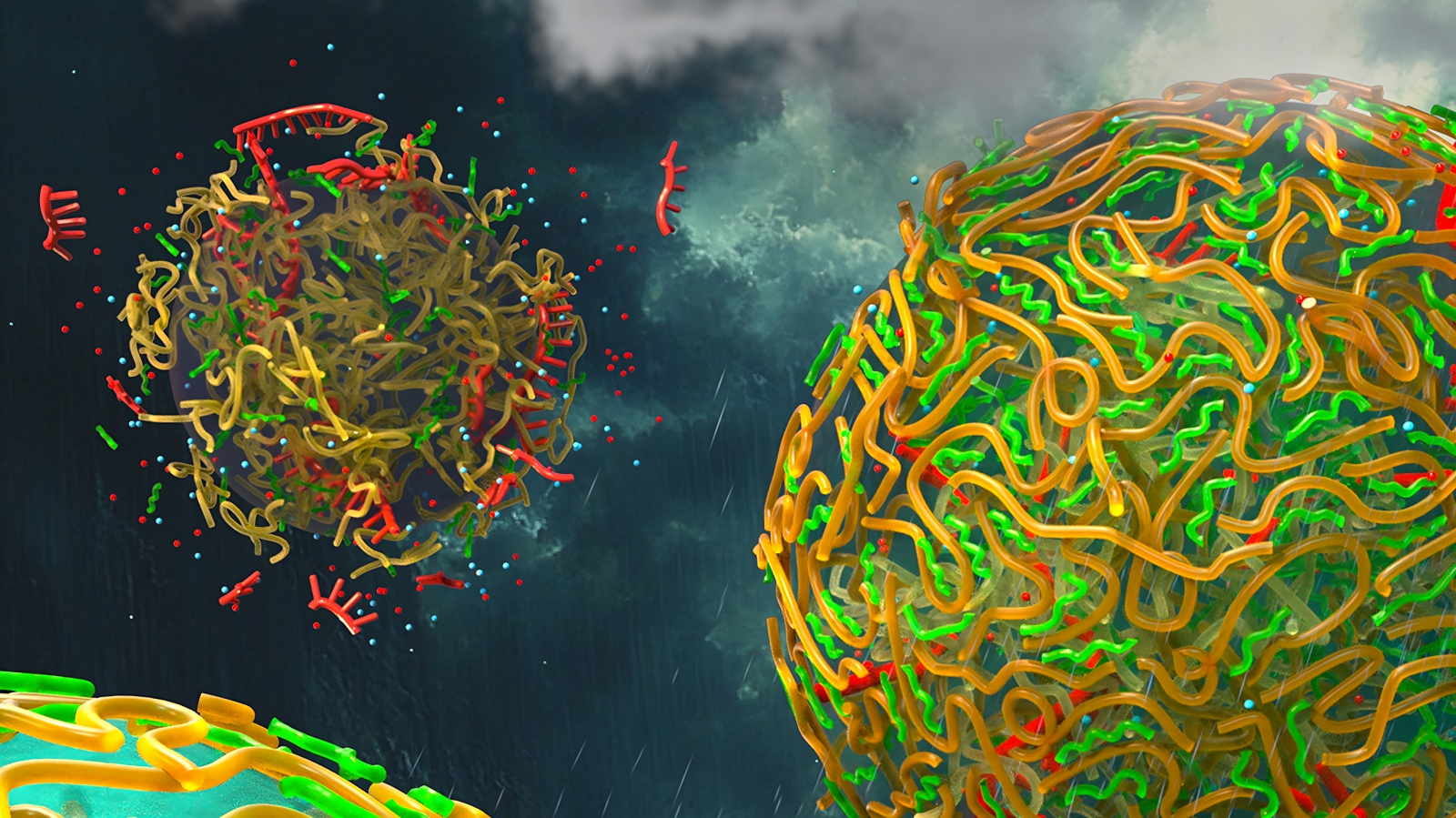What if rain was the origin of life on Earth? 🌧️
Published by Cédric,
Article author: Cédric DEPOND
Source: Science Advances
Other Languages: FR, DE, ES, PT
Article author: Cédric DEPOND
Source: Science Advances
Other Languages: FR, DE, ES, PT
Follow us on Google News (click on ☆)
The formation of modern cells, true microscopic factories, depends on sophisticated membranes. But the primordial structures, called protocells, were much simpler and more vulnerable.

Illustration Pritzker School of Molecular Engineering, University of Chicago / Peter Allen, Second Bay Studios
Scientists hypothesize that primitive Earth saw the emergence of rudimentary life forms: vesicles and coacervates. Vesicles, small lipid bubbles, provided protection for vital molecules but lacked proteins to regulate exchange.
Coacervates, on the other hand, are membrane-less droplets that facilitated chemical reactions but were exposed to a chaotic environment. Their open nature posed a risk of dispersing essential molecules.
The scientific challenge was to understand how these primitive structures could maintain their integrity long enough to initiate evolutionary processes. A new hypothesis highlights an unexpected actor: rainwater.
Placed in deionized water, coacervates expel ions, forming a thin "skin" on their surface. This mesh stabilizes the droplet, preventing it from merging with others and allowing it to retain molecules like RNA.
Researchers propose that this stabilization may have allowed the first cells to concentrate their genetic material. In experiments with pure water, coacervates retained their RNA for several days, whereas in ionized water, it dispersed in just a few seconds.
This hypothesis could guide research on life elsewhere: similar environments may favor the stability of primitive cells, even outside Earth.
What is a coacervate and its role in the origin of life?
A coacervate is a droplet formed by the assembly of organic molecules, such as nucleic acids and peptides, without a protective membrane. This structure allows for easy material exchange, promoting the chemical reactions necessary for primitive life.
Coacervates are considered potential candidates for the earliest forms of life, as they can concentrate essential molecules while creating a suitable environment for the emergence of metabolic processes and the replication of molecules, such as RNA.